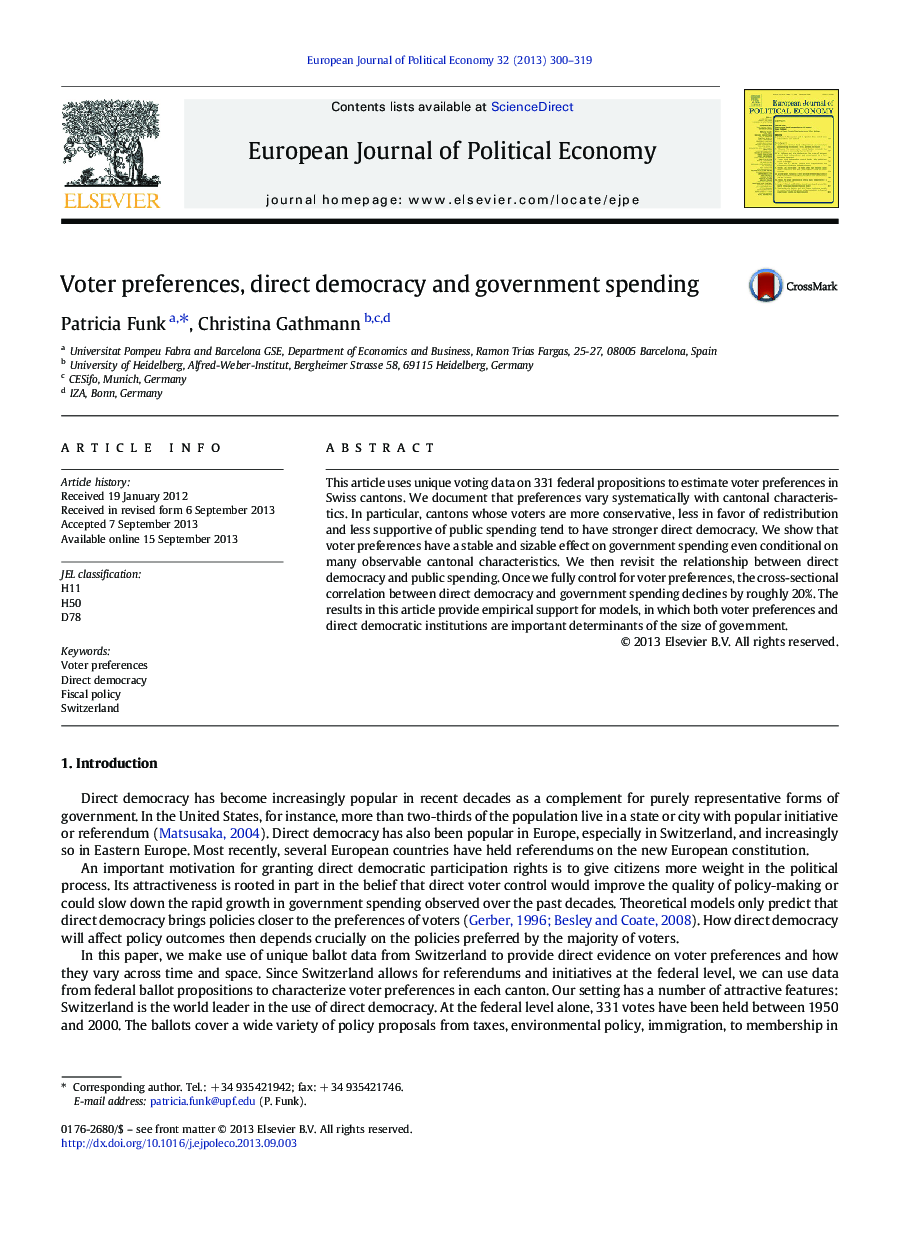| کد مقاله | کد نشریه | سال انتشار | مقاله انگلیسی | نسخه تمام متن |
|---|---|---|---|---|
| 5068025 | 1476895 | 2013 | 20 صفحه PDF | دانلود رایگان |
- This article presents novel estimates of voter's preferences and explores how they vary with canton characteristics, across political institutions and over time.
- We use unique voting data on 331 federal propositions from Switzerland to estimate voter preferences for the cantons (states).
- We document that the demand for government is systematically lower in states with stronger direct democracy.
- The effect of direct democracy on government spending declines by about 20% once we control for voter preferences.
- Many previous studies overestimated the effect of direct democracy on government spending because there was no proper adjustment for preference heterogeneity across states.
This article uses unique voting data on 331 federal propositions to estimate voter preferences in Swiss cantons. We document that preferences vary systematically with cantonal characteristics. In particular, cantons whose voters are more conservative, less in favor of redistribution and less supportive of public spending tend to have stronger direct democracy. We show that voter preferences have a stable and sizable effect on government spending even conditional on many observable cantonal characteristics. We then revisit the relationship between direct democracy and public spending. Once we fully control for voter preferences, the cross-sectional correlation between direct democracy and government spending declines by roughly 20%. The results in this article provide empirical support for models, in which both voter preferences and direct democratic institutions are important determinants of the size of government.
Journal: European Journal of Political Economy - Volume 32, December 2013, Pages 300-319
